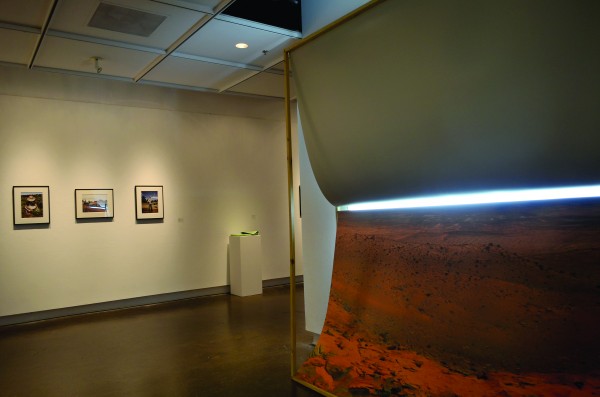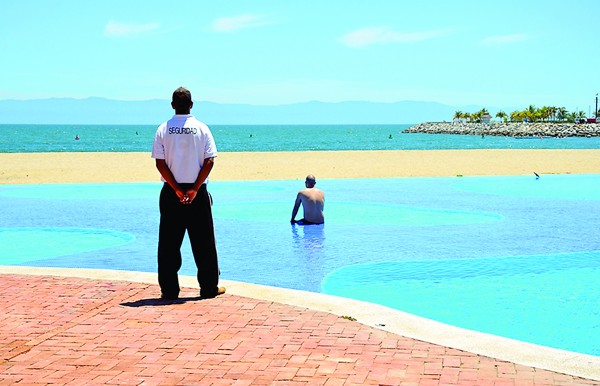
Professor Jill Frank and Atlanta-based artist Stephanie Dowda co-curetted the exhibit “Shadow Puppets: Traces of New Documentary Practices.” The exhibit, questioning the objectivity and context of lens-based mediums, challenges popular views of photography and video. “We had been talking about changing perspectives on documentary practice,” Frank said of her and Dowda’s vision for the show. “For the most part everyone is kind of playing on this idea that the lens is able to transform an experience… make the truth content very questionable.”

Both women, who enjoy photography, found artists that toyed with the traditional idea of documenting with a lens.
“The exhibition kind of grew out of this idea that we wanted to reflect on artist who were maybe borrowing parts of documentary practice—like the tradition, but not abiding by anything that we traditionally think of as documentary,” Frank said.
One artist featured in the exhibit, Debbie Grossman, re-imagined photographs by Russell Lee that were originally photographed for the United States Farm Security Administration in 1940. “My Pie Town” shows Lee’s photograph of the homestead outpost as being inhabited only by women.
“She is using some level of manipulation to have us reconsider history and maybe make us think a little bit about what we are used to seeing, and challenge our expectation of who’s working and what a family is,” Frank said of Grossman’s work. “I thought in her case she was almost trying to correct an impression that had been imbedded by this heavy duty historically profound project.”
Frank said some historians, and even her students, recognize the historical importance of projects like the FSA and Works Progress Administration Narratives and how they document American history, but not free of bias.
“Actually it’s really subjective,” Frank said. “Photographers made choices about where they pointed their camera, who they photographed and how they represented this Depression era work program… so I think she is just a really solid example reflecting on the actual tradition [of document photography].”
Other pieces take non-tradition forms to re-examine the subjective truth in documenting history. Although unreliable, photography and film continue to persuade observers while other mediums might not.
“As much as we say ‘no don’t trust images! There’s Photoshop. There’s a world of manipulation.’ It still carries this weight,” she said. “So when artists are choosing to package their ideas inside photography or inside video there’s a component of that, they are trying to play a little bit with that fact/ fiction kinda truth content.”
A touching piece of the exhibit is Chicago-based artist Jason Lazarus’ video of the top of a tree outside of Anne Frank’s home that is projected on to a white wall in the exhibit.
“It is an interesting story— [the tree] had a fungus and it got sick and it died. There was a whole movement to preserve the tree,” Frank said. “But ultimately when you look at it you are thinking about what Anne Frank saw…[Lazarus] eliminated all of these relevant cultural [landmarks], no street signs, no hot air balloons, nothing happening in the background, nothing to give you a sense of what year this was made. It is this very unsettling feeling of being able to view something that was exactly what she was able to view— but just because it’s the lens…”
The videos and photos in “Shadow Puppets” are not only moving but question truth and contexts in unique ways.
“[It’s] producing equally political work, but making us take time with how we interpret images, and how we asses a lens based object or image and what attributes we give it right away as far as truth is concerned.”
“Shadow Puppets: Traces of the New Documentary Practices” will be on display through Feb. 7 on the first floor of the Arts and Humanities building. On Feb. 7 at 5:30 p.m. there will be a panel discussion at the Kopleff recital hall with Jill Frank, Stephanie Dowda and select artists from the exhibit.

“Operations Guest (Pool)” by Daniel Bejar
